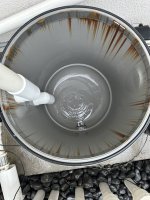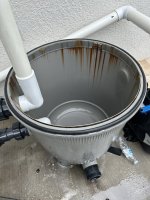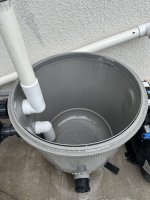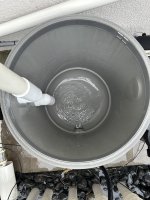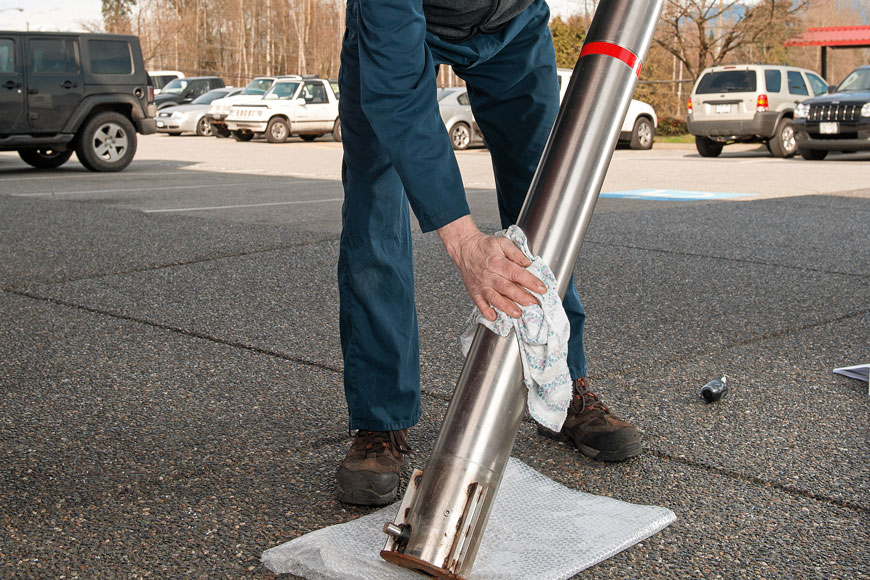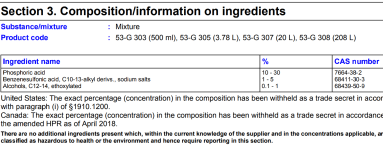Well I just did an ascorbic acid treatment on my pool and couldn't believe how clean it made. I didn't realize I had that level of staining. I noticed some slight yellowing the the pebble sheen, but didn't think it was really that bad. What made me do it in the first place was the yellowing on the plastic drains and jets...
Now on to the reason I am actually posting this thread. I've noticed some rusting going on in my Jandy DE filter. It has been there awhile (4.5 yr old pool now) and has progressively gotten worse. I took some ascorbic acid mixed water to it and it really didn't do much.. Then I tried muriatic acid and it took it right off. Looks super clean now, but I have a feeling it is just going to rust again.
Any idea why this metal band is rusting? Anyone else with a similar experience?
Now on to the reason I am actually posting this thread. I've noticed some rusting going on in my Jandy DE filter. It has been there awhile (4.5 yr old pool now) and has progressively gotten worse. I took some ascorbic acid mixed water to it and it really didn't do much.. Then I tried muriatic acid and it took it right off. Looks super clean now, but I have a feeling it is just going to rust again.
Any idea why this metal band is rusting? Anyone else with a similar experience?


